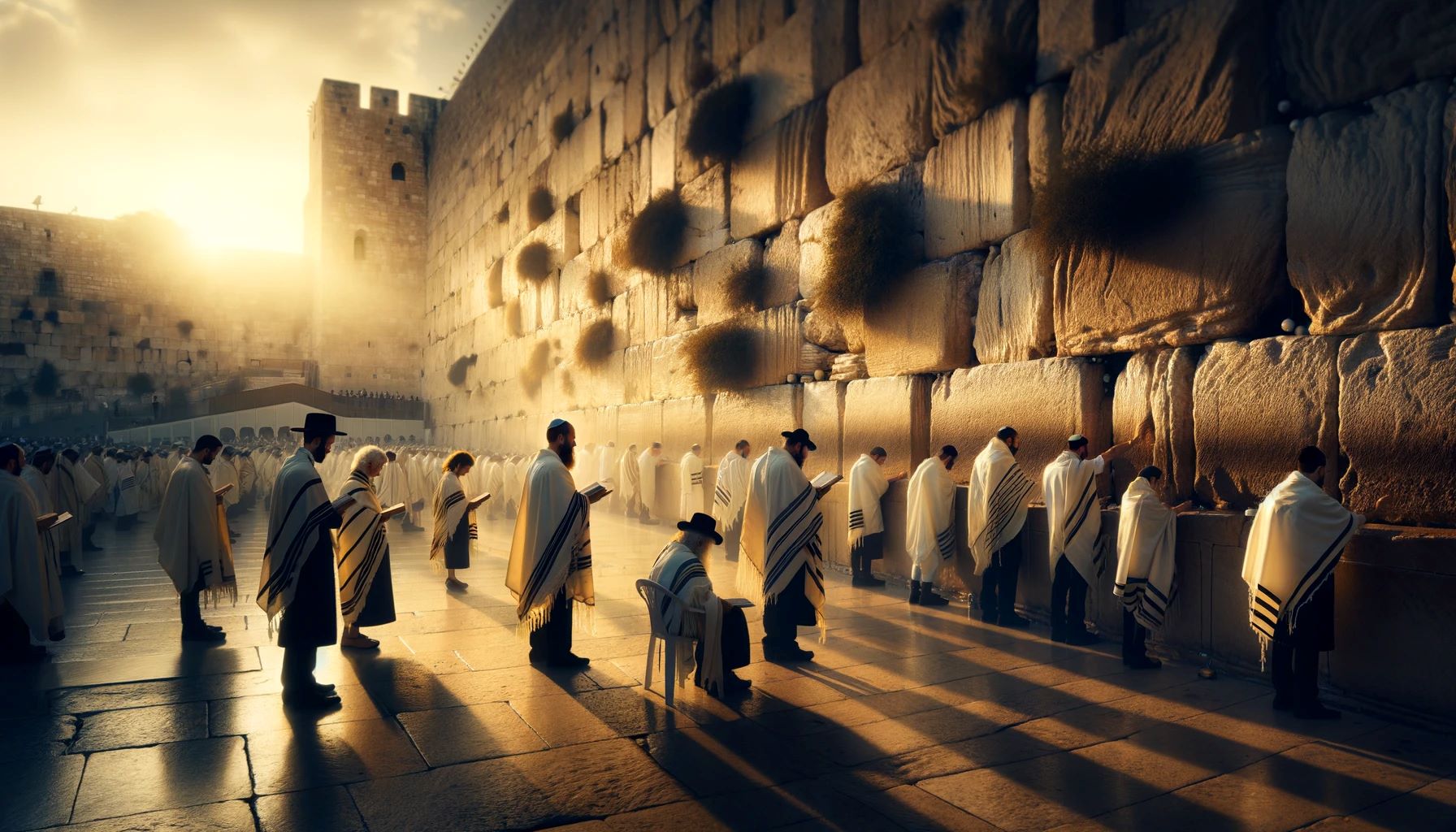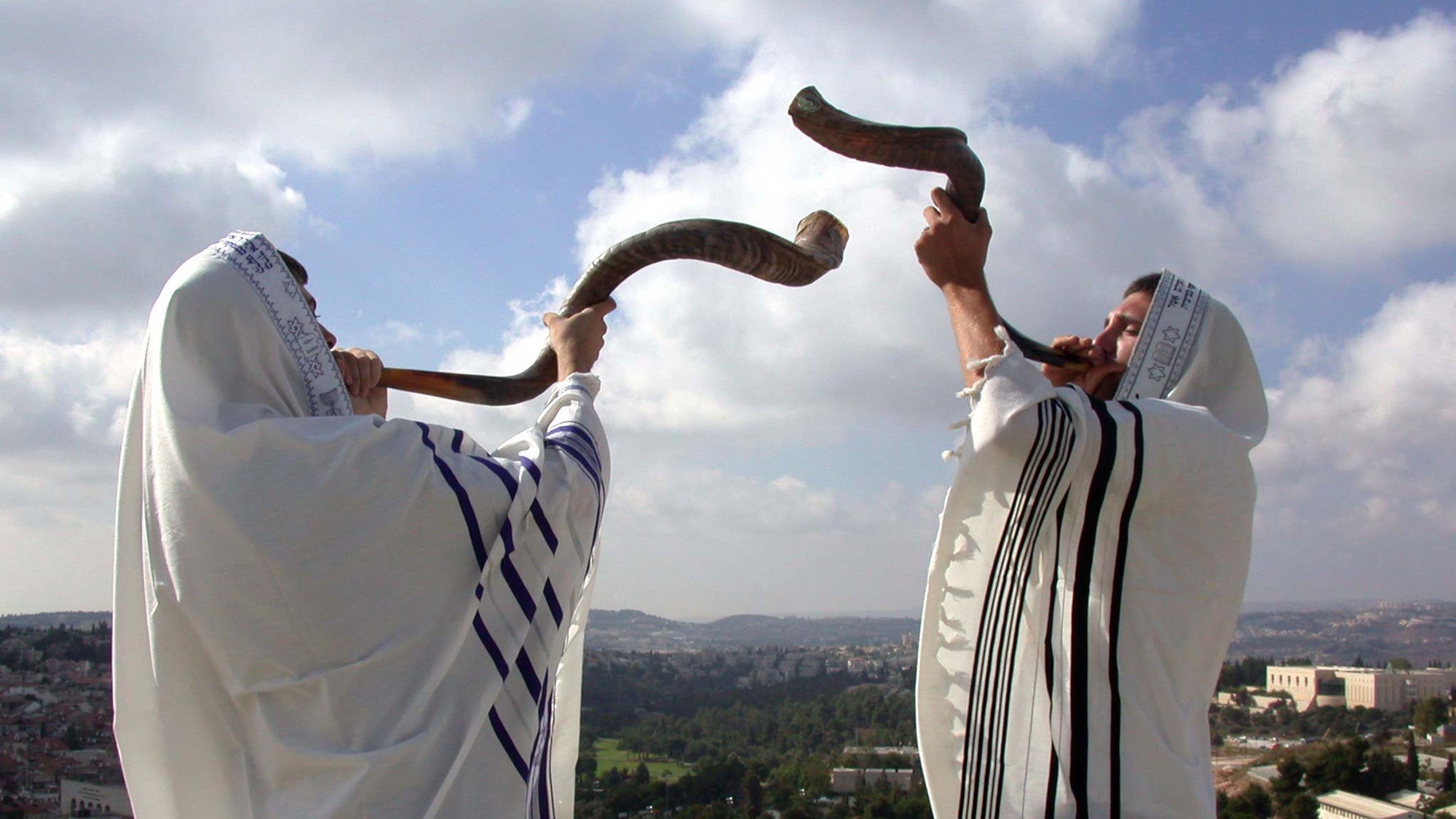Home>Theology and Spirituality>What Does The Word Scapegoat Mean In Relation To The Day Of Atonement


Theology and Spirituality
What Does The Word Scapegoat Mean In Relation To The Day Of Atonement
Published: February 10, 2024
Peter Smith, Editorial Director at Christian.net, combines deep insights into faith, politics, and culture to lead content creation that resonates widely. Awarded for his contributions to religious discourse, he previously headed a major organization for religious communicators, enhancing dialogue on faith's societal impacts.
Discover the significance of the term "scapegoat" in the context of the Day of Atonement and its theological and spiritual implications. Explore its meaning and relevance in religious practices.
(Many of the links in this article redirect to a specific reviewed product. Your purchase of these products through affiliate links helps to generate commission for Christian.net, at no extra cost. Learn more)
Table of Contents
Introduction
The concept of the scapegoat has deep roots in religious and cultural traditions, carrying profound symbolism and significance. The term "scapegoat" is often used in contemporary language to describe a person or entity that bears the blame or punishment for the mistakes or sins of others. However, its origins can be traced back to ancient rituals and practices, particularly within the context of the Day of Atonement in Jewish tradition.
The word "scapegoat" itself evokes a sense of mystery and intrigue, prompting curiosity about its origins and the role it has played throughout history. Understanding the historical and spiritual significance of the scapegoat provides valuable insights into the complexities of human nature, morality, and the quest for redemption.
In this article, we will delve into the origins of the word "scapegoat," explore its role in the ancient ritual of the Day of Atonement, and examine its enduring symbolism in modern contexts. By unraveling the layers of meaning behind this evocative term, we can gain a deeper appreciation for the profound impact it has had on religious and cultural narratives throughout the ages.
Read more: What Does “Atonement” Mean In The Bible
The Origin of the Word "Scapegoat"
The term "scapegoat" has its origins in ancient religious practices, specifically in the context of the Day of Atonement as described in the Hebrew Bible. The English word "scapegoat" is a translation of the Hebrew term "Azazel," which appears in the Book of Leviticus in the Old Testament. The etymology of "Azazel" is complex and has been the subject of scholarly debate, adding to the enigmatic nature of the concept.
In the biblical narrative, the scapegoat is a central figure in the ritual of atonement, which was performed annually by the high priest of the Israelites. According to the text, two goats were selected, one designated for sacrifice and the other as the scapegoat. The high priest would cast lots to determine the fate of each goat, with one being offered as a sacrifice to atone for the sins of the people, while the other, the scapegoat, would bear the sins of the community and be sent into the wilderness.
The precise meaning of "Azazel" and the role of the scapegoat in ancient Hebrew tradition have been the subject of interpretation and speculation. Some scholars suggest that "Azazel" may refer to a supernatural being or demon, while others view it as a symbolic representation of impurity and the expulsion of sin from the community.
The concept of the scapegoat extends beyond the biblical context and has been observed in various forms across different cultures throughout history. The ritualistic transfer of sins onto an animal or individual reflects a universal human desire for absolution and purification. The scapegoat embodies the paradoxical nature of atonement, serving as both a vessel for collective guilt and a means of achieving spiritual renewal.
The enduring legacy of the scapegoat in religious and cultural narratives underscores its profound significance as a symbol of redemption and the complexities of human morality. As we explore the origins of the word "scapegoat," we gain insight into the timeless quest for atonement and the enduring power of ancient rituals to shape our understanding of sin, forgiveness, and the human condition.
The Day of Atonement in Jewish Tradition
The Day of Atonement, known as Yom Kippur in Hebrew, holds a central place in the religious calendar of Judaism. It is considered the holiest day of the year, marked by solemn reflection, repentance, and seeking forgiveness from both divine and human sources. Yom Kippur occurs on the tenth day of Tishrei, the seventh month of the Jewish calendar, following the observance of Rosh Hashanah, the Jewish New Year.
The significance of Yom Kippur stems from its role as a day of reconciliation and spiritual purification. According to Jewish tradition, it is a time for individuals to confront their transgressions, seek forgiveness from those they have wronged, and strive to mend broken relationships. The overarching theme of atonement permeates the observance of Yom Kippur, emphasizing the transformative power of repentance and the potential for spiritual renewal.
Central to the observance of Yom Kippur is the practice of fasting, which extends for approximately 25 hours, beginning at sundown and concluding after nightfall the following day. This period of self-denial serves as a physical and spiritual discipline, allowing individuals to focus their thoughts on introspection, prayer, and the pursuit of atonement. The act of fasting symbolizes a commitment to spiritual purification and a willingness to undergo personal sacrifice in the pursuit of divine forgiveness.
In addition to fasting, the rituals of Yom Kippur include communal prayer services, during which the congregation engages in collective confession and supplication. The recitation of liturgical prayers, such as the Vidui (confessional), provides a framework for acknowledging wrongdoing and expressing remorse. The atmosphere of solemnity and introspection pervades the synagogue, as individuals engage in deep introspection and seek reconciliation with both God and fellow human beings.
The observance of Yom Kippur also encompasses the symbolic acts of purification and atonement, including the casting away of sins through the ritual of Tashlich, in which individuals symbolically discard their sins by casting breadcrumbs into flowing water. This symbolic gesture represents the desire to rid oneself of transgressions and embrace a renewed sense of spiritual purity.
Overall, the Day of Atonement in Jewish tradition embodies the profound significance of seeking forgiveness, both from the divine and from one's fellow human beings. It serves as a powerful reminder of the human capacity for repentance and transformation, emphasizing the enduring values of humility, reconciliation, and the pursuit of spiritual renewal.
The Role of the Scapegoat in the Day of Atonement
The Day of Atonement, or Yom Kippur, holds profound significance in Jewish tradition, serving as a pivotal moment for spiritual introspection and seeking forgiveness. At the heart of this sacred observance lies the ritual of the scapegoat, a symbolic and enigmatic figure tasked with bearing the collective sins of the community.
According to the biblical account in the Book of Leviticus, the high priest of the Israelites played a central role in the ritual of the scapegoat on Yom Kippur. Two goats were carefully chosen, one for sacrifice and the other as the scapegoat. Through the casting of lots, one goat was designated for sacrifice, its blood offered as an atonement for the sins of the people. The other goat, the scapegoat, was laden with the transgressions and iniquities of the community before being sent into the wilderness.
The selection of the scapegoat was a solemn and sacred process, representing the transfer of communal guilt and impurity onto a designated vessel. This symbolic act served as a means of purifying the community and seeking divine forgiveness for their transgressions. The scapegoat, burdened with the weight of collective sin, carried the hopes of spiritual renewal and reconciliation for the entire community.
The act of sending the scapegoat into the wilderness held profound symbolism, signifying the removal of impurity and the restoration of spiritual purity within the community. As the scapegoat ventured into the wilderness, it carried with it the sins and wrongdoings of the people, symbolically purging the community of its iniquities and paving the way for a renewed relationship with the divine.
The ritual of the scapegoat on Yom Kippur underscores the profound human yearning for atonement and redemption. It encapsulates the collective responsibility for moral and spiritual transgressions, as well as the enduring belief in the possibility of renewal and forgiveness. The scapegoat, as a symbolic embodiment of communal sin, embodies the complexities of human nature and the eternal quest for spiritual purification.
In modern contexts, the symbolism of the scapegoat continues to resonate, reminding individuals of the enduring significance of seeking forgiveness, both from the divine and from one another. The ritual of the scapegoat serves as a timeless testament to the human capacity for introspection, repentance, and the pursuit of spiritual renewal, echoing across generations as a poignant symbol of hope and redemption.
The Symbolism of the Scapegoat in Modern Contexts
In contemporary society, the symbolism of the scapegoat continues to resonate profoundly, offering valuable insights into the complexities of human behavior, morality, and the pursuit of redemption. While the ancient ritual of the scapegoat may seem distant from modern life, its symbolic significance remains relevant in various contexts, both cultural and psychological.
One prominent modern interpretation of the scapegoat lies in the realm of psychology and social dynamics. The concept of scapegoating, as observed in group behavior, involves the displacement of blame onto a specific individual or group for the perceived shortcomings or troubles within a community. This psychological phenomenon reflects the enduring human tendency to seek external targets for internal conflicts, often leading to unjust persecution and marginalization. By understanding the dynamics of scapegoating, individuals and communities can strive to recognize and address underlying tensions and conflicts in a more constructive and empathetic manner.
Moreover, the symbolism of the scapegoat extends to broader societal issues, including the scapegoating of marginalized or vulnerable groups. Throughout history, certain communities have been unjustly targeted and scapegoated due to prejudice, fear, or societal tensions. By acknowledging and challenging these harmful patterns, society can work towards fostering greater inclusivity, empathy, and social justice, thereby dismantling the destructive mechanisms of scapegoating.
In a more introspective context, the symbolism of the scapegoat invites individuals to confront their own tendencies to deflect responsibility and assign blame to others. By recognizing the allure of scapegoating in personal relationships and societal interactions, individuals can cultivate a deeper sense of accountability, empathy, and ethical conduct. This self-awareness fosters a more compassionate and equitable approach to addressing conflicts and challenges, promoting understanding and reconciliation.
Furthermore, the enduring symbolism of the scapegoat serves as a poignant reminder of the human capacity for transformation and renewal. In times of personal or collective turmoil, the concept of the scapegoat encourages individuals to engage in introspection, seek forgiveness, and strive for reconciliation. By embracing the lessons of the scapegoat, individuals can embark on a journey towards healing, growth, and the restoration of fractured relationships.
In essence, the symbolism of the scapegoat in modern contexts offers a profound reflection on the complexities of human nature, the dynamics of social behavior, and the enduring quest for redemption and reconciliation. By embracing the timeless lessons embedded in the symbolism of the scapegoat, individuals and communities can aspire towards greater empathy, understanding, and the pursuit of collective healing and renewal.
Read more: What Is A Day Of Atonement
Conclusion
The concept of the scapegoat, rooted in ancient religious traditions and enduring in contemporary symbolism, encapsulates profound insights into the human experience. From its origins in the ritual of the Day of Atonement to its resonance in modern contexts, the symbolism of the scapegoat offers timeless lessons on accountability, redemption, and the pursuit of reconciliation.
The ritual of the scapegoat on the Day of Atonement in Jewish tradition serves as a poignant reminder of the human yearning for atonement and spiritual renewal. Through the symbolic transfer of communal guilt onto a designated vessel, the ritual embodies the collective responsibility for moral transgressions and the enduring belief in the possibility of redemption. The scapegoat, burdened with the weight of collective sin, represents the complexities of human nature and the eternal quest for spiritual purification.
In modern contexts, the symbolism of the scapegoat extends to psychological and societal dynamics, shedding light on the harmful patterns of scapegoating and unjust persecution. By recognizing and challenging these destructive behaviors, individuals and communities can strive towards greater empathy, inclusivity, and social justice. Moreover, the symbolism of the scapegoat invites introspection, prompting individuals to confront their own tendencies to deflect responsibility and assign blame to others. This self-awareness fosters a more compassionate and equitable approach to addressing conflicts and challenges, promoting understanding and reconciliation.
Ultimately, the enduring symbolism of the scapegoat serves as a testament to the human capacity for transformation and renewal. It inspires individuals to embark on a journey towards healing, growth, and the restoration of fractured relationships. By embracing the timeless lessons embedded in the symbolism of the scapegoat, individuals and communities can aspire towards greater empathy, understanding, and the pursuit of collective healing and renewal.
In conclusion, the concept of the scapegoat transcends religious and cultural boundaries, offering profound insights into the complexities of human behavior, the dynamics of social interaction, and the enduring quest for redemption. Through its symbolism, the scapegoat continues to resonate as a powerful emblem of hope, reconciliation, and the timeless pursuit of atonement.














